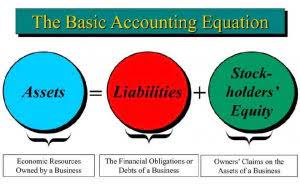
There are sometimes significant risks that are simply not in the liability section of the balance sheet. Most recognized contingencies are those meeting the rather strict criteria of “probable” and “reasonably estimable.” a contingent liability that is probable and for which the dollar amount can be estimated should be One exception occurs for contingencies assumed in a business acquisition. The journal entry would include a debit to legal expense for $1.25 million and a credit to an accrued liability account for $1.25 million.
Just as with environmental matters, a company’s social actions can also lead to contingent liabilities. This is more prevalent with companies that have extensive corporate social responsibility (CSR) initiatives. It’s crucial to understand the significant connection between contingent liabilities and sustainability in a corporate landscape. This link is premised on the concept that a company’s social and environmental responsibilities manifest real potential liabilities. The legal implications of contingent liabilities necessitate having legal expertise onboard.
Recognition of a provision
However, a note to the financial statements may be needed to explain that a material adverse event arising subsequent to year end has occurred. The matching principle of accounting states that expenses should be recorded in the same period as their related revenues. In the case of warranties, a contingent liability is required because it represents an amount that is not fully earned by a company at the time of sale.
Assume that a company is facing a lawsuit from a rival firm for patent infringement. The company’s legal department thinks that the rival firm has a strong case, and the business estimates a $2 million loss if the firm loses the case. Because the liability is both probable and easy to estimate, the firm posts an accounting entry on the balance sheet to debit (increase) legal expenses for $2 million and to credit (increase) accrued expense for $2 million. If the contingent liability is considered remote, it is unlikely to occur and may or may not be estimable.
What is the debit entry?
When determining if the contingent liability should be recognized, there are four potential treatments to consider. Companies should set aside a contingency reserve to cover unexpected liabilities. In conclusion, the consideration of contingent liabilities is an essential part of mergers and acquisitions. Their presence can immensely affect the valuation of a business and structure the negotiation of the deal. This examination helps in determining the fair value of the target company and deciding whether or not the acquisition is financially viable. If these potential liabilities are significant, they might lead to a steep drop in the perceived value of the company being acquired.
Understanding the difference between a contingent liability and an actual liability is critical, especially when examining an organization’s financial health. Both have implications for financial statements, but they are treated differently. When an organization ventures into practices that directly or indirectly affect the environment, contingent liabilities may arise.